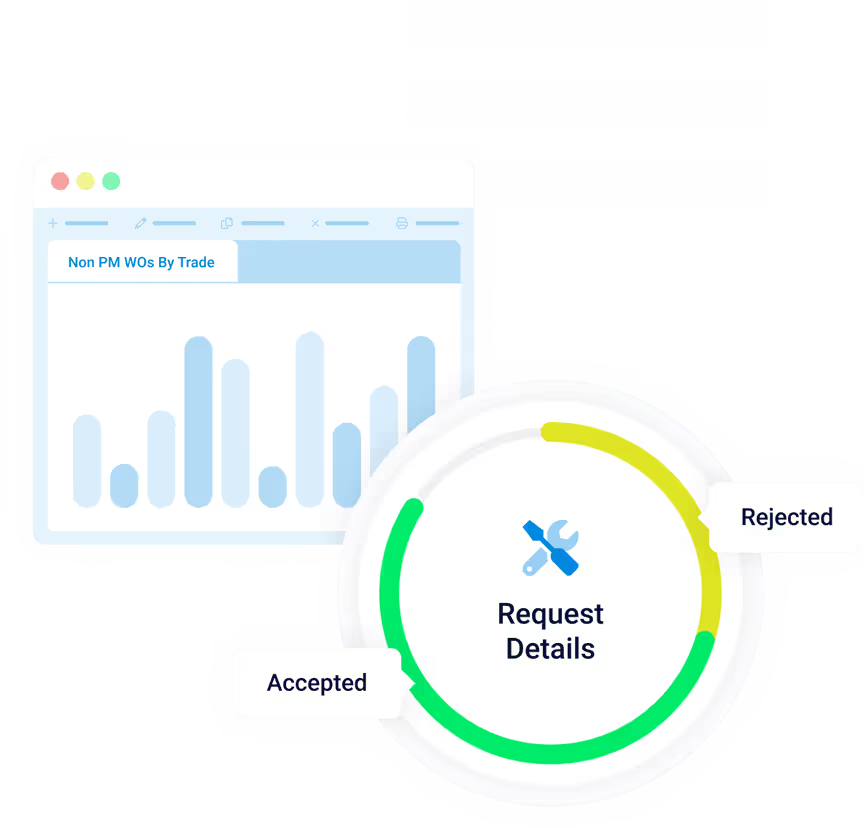
About the client
Challenges
The spaces serve as vibrant hubs for educational, cultural, and community activities for the client. However, managing maintenance activities was a constant struggle for the institution due to traditional paper-based methods. The educational leader needed a more efficient system to offer the highest standards of learning facilities. It wanted the solution to address the following key challenges in order to uphold its commitment to education excellence:
Time-consuming processes: The manual nature of maintenance workflows resulted in significant delays in addressing maintenance requests. For instance, when a maintenance issue arose, staff members had to fill out handwritten forms, which were then distributed physically or via email. This process consumed valuable time and resources, leading to inefficiencies in addressing urgent maintenance needs promptly.
Communication bottlenecks: The reliance on manual methods also led to communication bottlenecks. With no centralized system in place, there were often delays in relaying information about maintenance requests, updates, and resolutions. This lack of real-time communication hindered the ability to respond promptly to urgent issues, potentially causing disruptions to school activities and operations.
Data loss risks: Managing maintenance through paper-based records posed significant risks of data loss. Handwritten forms and physical documents were susceptible to damage, misplacement, or loss, leading to incomplete or inaccurate records of maintenance activities. This made it challenging to track the status of maintenance requests, identify recurring issues, or analyze historical data for informed decision-making.
Limited visibility: The absence of a centralized system meant limited visibility into facility operations and maintenance activities of equipment and assets. Without a comprehensive database to store maintenance records and track equipment performance, it was difficult for administrators to assess the efficiency of extensive maintenance processes, identify trends or patterns, and allocate resources effectively.

Solution
The client adopted WebTMA, a leading facility maintenance management solution. WebTMA served as a comprehensive platform for streamlining the entire maintenance process - from request initiation to task completion. Here are the implementation highlights of this strong partnership:
Centralized request system: WebTMA provided a centralized platform, revolutionizing the submission and tracking of maintenance requests. This eliminated the scattered nature of the previous system, providing a unified hub for efficient management.
Automated work orders: The transition saw thousands of work order requests seamlessly converting into categorized work orders based on service type. This automation not only minimized manual errors but also streamlined the workflow, enhancing overall efficiency in task processing.
Real-time task assignment: Supervisors gained the ability to assign tasks to specific departments and technicians in real time, fostering amore responsive and agile approach to addressing maintenance needs promptly.
Mobile and laptop accessibility: Technicians were empowered with convenient access to the system through laptops and mobile devices. This ensured efficient on-site responses, significantly improving the overall responsiveness of the maintenance team.
Historical data and reporting: WebTMA's robust dashboards and reporting tools provided the client with valuable insights into historical data and key performance indicators(KPIs). This not only facilitated a comprehensive understanding of past maintenance trends but also supported informed decision-making for effective backlog management and optimized departmental workflows, contributing to an agile and responsive facility management approach.
Room inspections: WebTMA allowed staff to schedule and conduct routine inspections efficiently. This feature facilitated the tracking of room conditions, identifying maintenance needs promptly to maintain a safe and conducive learning environment.
Project management: The implementation of WebTMA introduced robust project management capabilities, enabling the planning, execution, and monitoring of maintenance projects. Project timelines, resource allocation, and progress tracking became more streamlined, ensuring the timely completion of maintenance initiatives.
Key management module: The key management module of WebTMA provided a systematic approach to managing access to various facilities and rooms. This module enhanced security measures by accurately tracking the assignment of keys and the access history. This reduced the risk of unauthorized entry and improved the overall facility security.
Time management: The time management feature in WebTMA enabled efficient tracking of technician hours spent on maintenance tasks. This functionality optimized labor utilization, improved accountability, and facilitated accurate billing and cost analysis.
Benefits
The adoption of WebTMA not only addressed immediate challenges but also positioned the client for long-term success by fostering a culture of efficiency, communication excellence, and prudent cost management in their facility management endeavors. The resulting benefits included:
Ready for a Demo?
Interested in taking this to the next level? Sign up for a free demo with a TMA Systems Account Executive. Enter your email below and we will reserve a time for you to test drive WebTMA.











